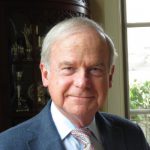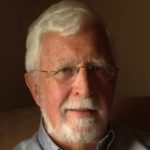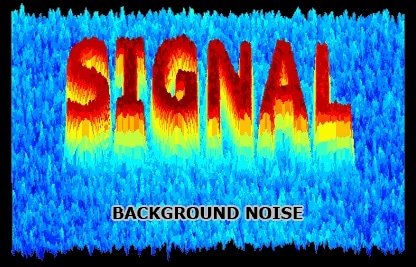Harry Abrams’ response (“Auditory Training – A Familiar Value Proposition in an Era of Revolutionary Change”) to our initial post (“Navigating the Road Ahead”) was appreciated. We agree with him that one key to future success is to focus on rehabilitation as a core offering and to contemplate ways that such services can be provided to a much larger public.
Before going there, however, we thought it useful to summarize what we have learned from our work undertaken during the past several years. That should help set the stage for a more complete discussion of what value proposition seems compelling when looking into the future.
A starting point is to understand how big the “hearing problem” really is. While absolute numbers vary depending on the criteria used, most estimates suggest that somewhere around 45 million people in the United States (add, say, another 4 million in Canada) are known to have symptoms of hearing loss. Those approximations are most often based solely on, “Is their hearing better or worse than 25 dB?” Using this inadequate yardstick and referencing industry data, a general conclusion emerges that less than 25% of those who need help are in fact treated – not exactly a stellar performance metric…! And, following the familiar pyramid graphic, instrumentation increases with age and degree of loss.
Is hearing loss the largest untreated chronic health condition?
We believe from years of audiological research these estimates are substantially understated. Our data sets contain hundreds of thousands of tests interpreted using embedded algorithms and stored from our testing at multiple sources – industry, school, hearing providers, family physician offices and public health programs.
Using more advanced audiological service based criteria and considering each subject’s pattern and level of hearing, they indicate the current incidence of hearing changes and actual hearing losses in the general population is likely twice as large as estimated and possibly even greater.
We know that sensorineural patterns of hearing loss can begin at birth or be acquired at relatively a young age, rather than suddenly appearing at 65 or older. Even when exacerbated by noise, ototoxic medications and/or one or more disease states, such changes usually progress gradually. Pattern recognition algorithmic routines (a feature of some automated hearing screening devices) can detect early changes in the normal hearing range thereby identifying younger people who are entering the initial stages of their “hearing journey”. Thus, the cohort who should be concerned about their hearing function and would benefit from consideration and treatment is very broad.
We conclude with good reason that hearing loss is the largest untreated chronic health and life style problem in our societies. That coupled with our growing understanding of the relationship between hearing function, physiological well-being, disease states and the impact of hearing loss on cognition later in life calls for a much more robust response that has been the case or envisioned to date.
No-strings-attached testing
We have also found a receptive audience among this much larger target audience. When testing is provided in an accessible, efficient and private fashion, with no strings attached, most people, regardless of their age, are interested in participating. This receptive audience is often prepared to take guidance provided its well explained and not biased towards a particular solution. When adequately prompted, there is often an appreciation of the widespread nature of the problem. Those with hearing loss can appreciate they are in good company – there is nothing unusual or abnormal about acknowledging and dealing with the condition.
All of which begs the question of how now to proceed as disruption in the hearing space progresses?
How can hearing healthcare professionals and the industry as a whole engage a much greater and we argue, potentially, receptive public to provide the advice, services and products that are warranted for prevention and rehabilitation? Is there good offense…or must it all be defense?
Actually we will argue it’s some of both. Future posts in this series will suggest revised positioning and several of the perspectives and methods that are increasingly important in order to survive and thrive.
A major theme underlying this analysis is that to be successful the industry must adopt much more of a consumer perspective (rather than product) and strive to create solutions that are simple (whenever possible, we aren’t attempting to produce nuclear fusion), scalable (given the millions who are currently untreated) and sustainable (think a continuum of care starting much earlier rather than relying principally on late stage intervention). About half the posts will be clinically oriented – reformulating the ways we understand and treat clientele; the other half outwardly oriented – indicating ways our reach can be dramatically expanded.
This article was originally published by Hearing Health & Technology Matters on April 2, 2018. Click here to read the original article.

Terry Mactaggart is the President and CEO of Ultimate Kiosk Inc. and Summus Hearing Solutions Inc., AI-enabled software companies with proprietary technologies aimed at capitalizing on opportunities in international hearing health. He has substantial experience with private venture creation, financing and growth as an investor, consultant, director, chairman and president of a number of companies – both privately owned and publicly traded – as well as of a private equity fund. A broad international perspective has been gained from these activities as well as from his leadership of The Niagara Institute and his time with the World Bank. Terry has a BA (Political Science and Economics) from the University of Toronto and an MBA from Stanford University. He can be reached at terry.mactaggart@bell.net
 Errol Davis is a director, Chief Audiologist and Data Scientist at Ultimate Kiosk. In addition to maintaining a private clinical practice with several ENT’s for over 30 years and consulting for a wide range of prominent public and private clients, he has taught at the medical school at the University of Toronto and served as the chief audiologist at the Toronto General Hospital, Canadian Hearing Society and Gulf Canada. He was the first to apply artificial intelligence in the form of polynomials and confidence coefficients for the classification of hearing using advanced computer technologies. Errol holds degrees in Audiology and Speech-Language Pathology from Western Michigan University and Michigan State University.
Errol Davis is a director, Chief Audiologist and Data Scientist at Ultimate Kiosk. In addition to maintaining a private clinical practice with several ENT’s for over 30 years and consulting for a wide range of prominent public and private clients, he has taught at the medical school at the University of Toronto and served as the chief audiologist at the Toronto General Hospital, Canadian Hearing Society and Gulf Canada. He was the first to apply artificial intelligence in the form of polynomials and confidence coefficients for the classification of hearing using advanced computer technologies. Errol holds degrees in Audiology and Speech-Language Pathology from Western Michigan University and Michigan State University.


